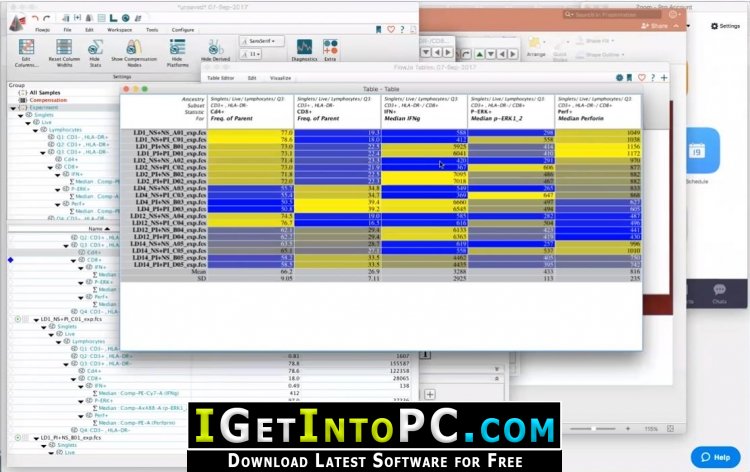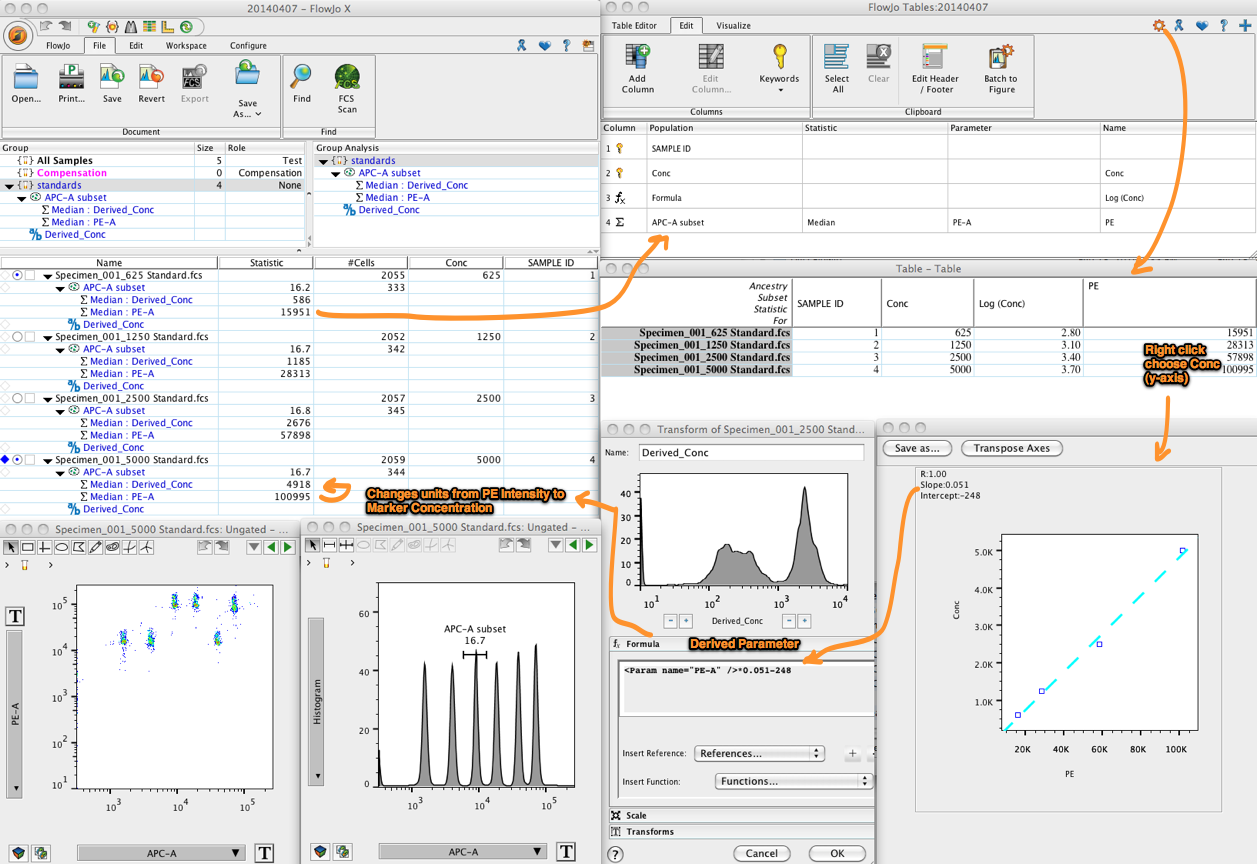

Spectral overlap of stains is dealt with in the compensation tool in FlowJo. All models can be copied to other populations or samples, with the same easy drag and drop interface used to propagate other gates or analyses. Rather, the focus is on analyzing groups of samples, experiments, or even multiple experiments at once.įlowJo has a Cell Cycle Platform that uses multiple models to fit the data, constrains the fitting parameters, and automatically calculates the percentage of cells in the G1, S, or G2 phases. In this way, FlowJo is a program that doesn't just analyze individual data samples. In general, batch operations are performed on all samples in the current group (therefore, you will want to create sample groups that will serve to help you generate batch outputs). Backgating analysis shows graphs of each gating operation with the final subpopulation highlighted in the graph of each stage.īatch operations (repetitive analyses performed on multiple samples) can be used in creating layouts and tables in FlowJo. Once your analysis contains subpopulations produced by gating within gates, it can be useful to see the source of a given subpopulation rendered graphically.

#FLOWJO 10 APPLY MATRIC SOFTWARE#
Good template design saves a huge amount of software analysis time and standardizes reporting. Next week, when you do the same experiment with different patients, most of the work is already done for you! You simply have to import the new samples into the template workspace. If you do similar experiments with different patients, you can then save a workspace as a template containing all the gates, statistics, tables, and layouts. Generate a table in which you can create particular statistics from all samples. Generate a graphical layout in which you can display particular graphs from all samples.ħ. Check gates on the samples in the group: modifications to accommodate sample to sample variation are easily made.Ħ. Apply the appropriate analyses to all the samples in a group.ĥ. Analyze a single sample in detail, creating gates, statistics, etc.Ĥ. Create Groups for related samples, gates, etc.ģ.
#FLOWJO 10 APPLY MATRIC SERIES#
You will find that your mode of operating FlowJo will probably be very similar to the following series of steps:Ģ.

FlowJo integrates remote data hosting services (LIMS) and supports "cloud" deployment for excellent scaling of performance in a demanding, high-throughput environment. FlowJo's sophisticated tools allow for generation of statistics, graphs, tables, web pages, and even movies. In addition to gating and statistics, FlowJo has specialized analysis platforms for assays involving DNA/Cell Cycle, Kinetics, and Proliferation, among others. calcium flux analysis, proliferation analysis, quantification, cluster identification and backgating display.įlowJo's strength is in analyzing whole experiments encompassing many related samples. Thus, you can apply a gate to a sample, copy it to the group, and that gate will be automatically placed on all samples in the group.įlowJo provides tools for the creation of histogram and other Description overlays, cell cycle analysis. When an operation on a group is initiated, FlowJo can perform the same operation on every sample belonging to that group. Within a workspace, samples can be grouped or sorted by various attributes such as the panel of antibodies with which they are stained, tissue type, or patient from whom they came. FlowJo's ability to automate repetitive operations facilitates the production of statistics tables and graphical reports when the experiment involves many samples, parameters and/or operations. Viewing an entire experiment in a Workspace permits organizing and managing complex cytometry experiments and produces detailed graphical reports. In FlowJo, samples are organized in a "Workspace" window, which presents a hierarchical view of all the samples and their analyses (gates and statistics). FlowJo will import and analyze cytometry data regardless of which flow cytometer is used to collect the data. Files produced by modern flow cytometers are written in the Flow Cytometry Standard format with an. FlowJo is a software package for analyzing flow cytometry data.

The leading platform for superior analysis.


 0 kommentar(er)
0 kommentar(er)
